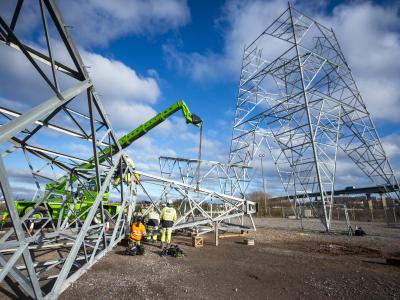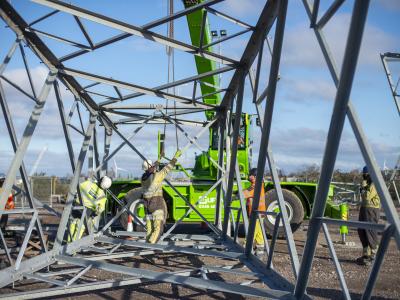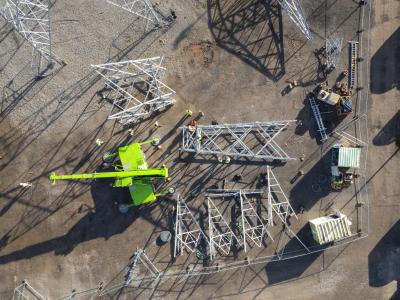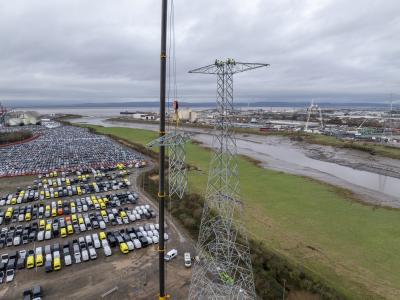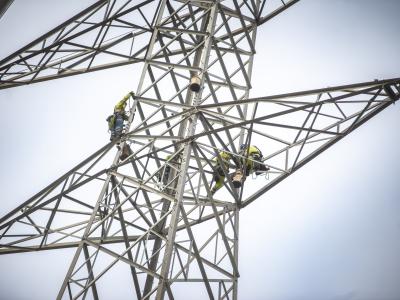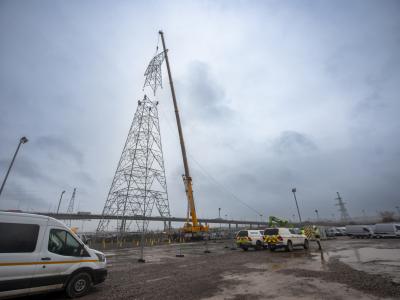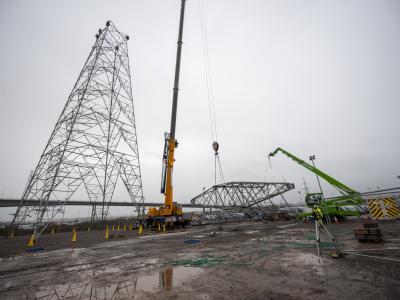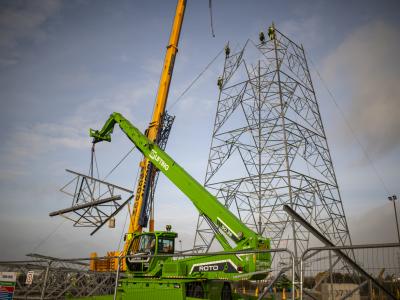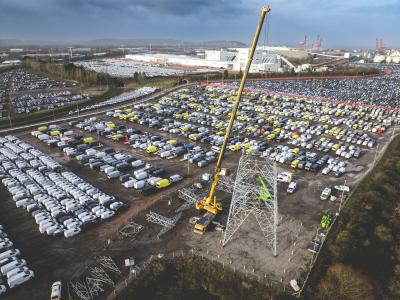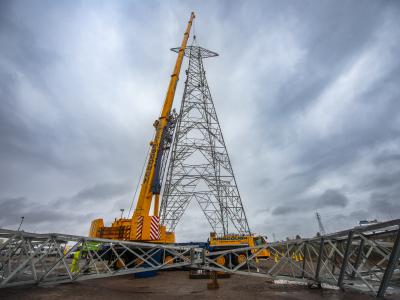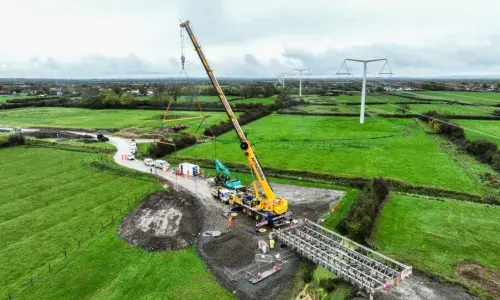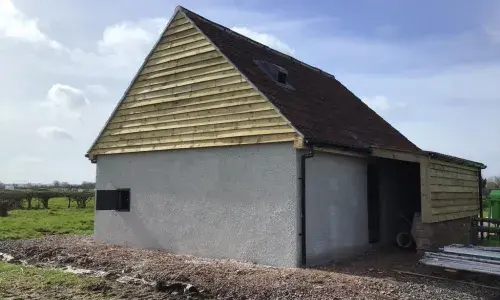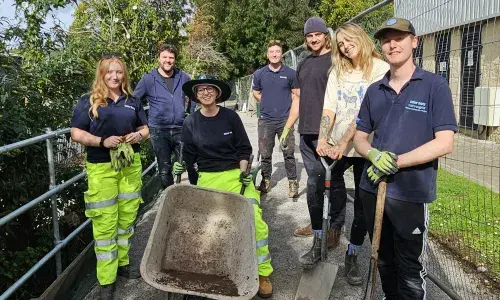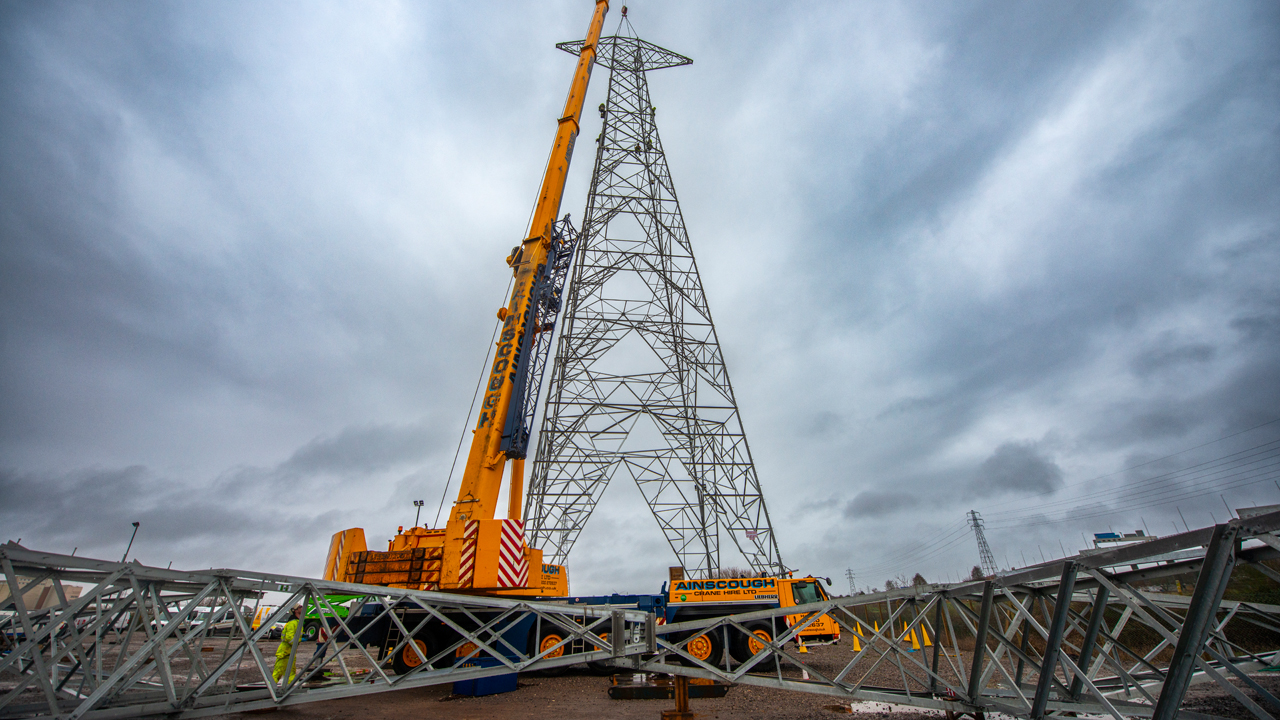
Conquering new heights for green energy
Construction of two new pylons at the mouth of the River Avon.
Two new 76-m tall lattice pylons have been built at the mouth of the River Avon near Bristol as part of the Hinkley Connection Project.
The two new pylons replace two original gentle giants - 91m high pylons built 90 years ago - and highlight the remarkable evolution of engineering techniques and sea transportation between the 1930s and 2020s.
The original gentle giants
Built in the 1930s, the two original pylons were constructed panel by panel and lifted up using a lifting device called a gin pole. Workers would have used a series of pulleys and guide wires to lift pylons into place.
The pylons needed to be over 90 metres tall to allow large cargo ships to travel up and down the River Avon. Constructing pylons of this height would have taken considerable effort using the techniques available at the time.
Removal and replacement
In 2023, the removal of these two gentle giants required the latest innovative engineering techniques. A crane capable of carrying 650 tonnes needed to use an extension, 34 meters tall, called a fly jib just to reach the top of the pylons.
This crane arrangement was so high (over 100metre) that the Civil Aviation Authority had to be contacted ahead of the works! The two towers were dismantled in 10 different sections due to their size and weight and the process took three days each.
The new pylons are 15 metres shorter than their predecessors, as modern cargo ships need less overhead clearance than those in the 1930s. All the sections of the pylons were first built at ground level. Then, under ideal weather conditions, each section was hoisted up into position using a large crane.
Hanging the wires
Next in the construction of the new pylons is hanging of the wires. This process is already underway with the successful pulling of a pilot bond between the two pylons.
With a span length of 434.93 meters between the two new pylons, wiring this section requires the use of a drone piloting. The drone was based on the southern bank of the river Avon and after all environmental consents and a river closure was in place, the drone flew a light rope, akin to a fishing line, over to the opposite side where a team was waiting to retrieve it. The conductors will be pulled back through on this pilot bond, this work is scheduled for April 2024.
Pylons across the Hinkley Construction Project
The other 25 lattice pylons being constructed by National Grid in and around Avonmouth will be 50 meters tall.
National Grid is using lattice pylons in this area rather than the T-pylon design seen elsewhere on the Hinkley Connection route because the lattice design provides the height required across the River Avon, and means National Grid can navigate the tighter turning angles through Avonmouth’s industrial port area between the River Avon and Seabank substation.
Most pylons take up to four weeks to assemble with those near the River Avon taking approximately six weeks. All of the new pylons will be constructed and will have the wires in place by Summer 2024.
Steven Haskayne, Senior Project Manager on the Hinkley Connection Project, commented:
“The removal of the two pylons above the river Avon have been a familiar sight for generations with them distributing power to the south west for over 90 years. The two new pylons will help supply energy to millions of homes and businesses from Hinkley Point C and other low carbon energy sources."
